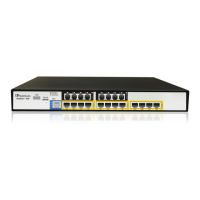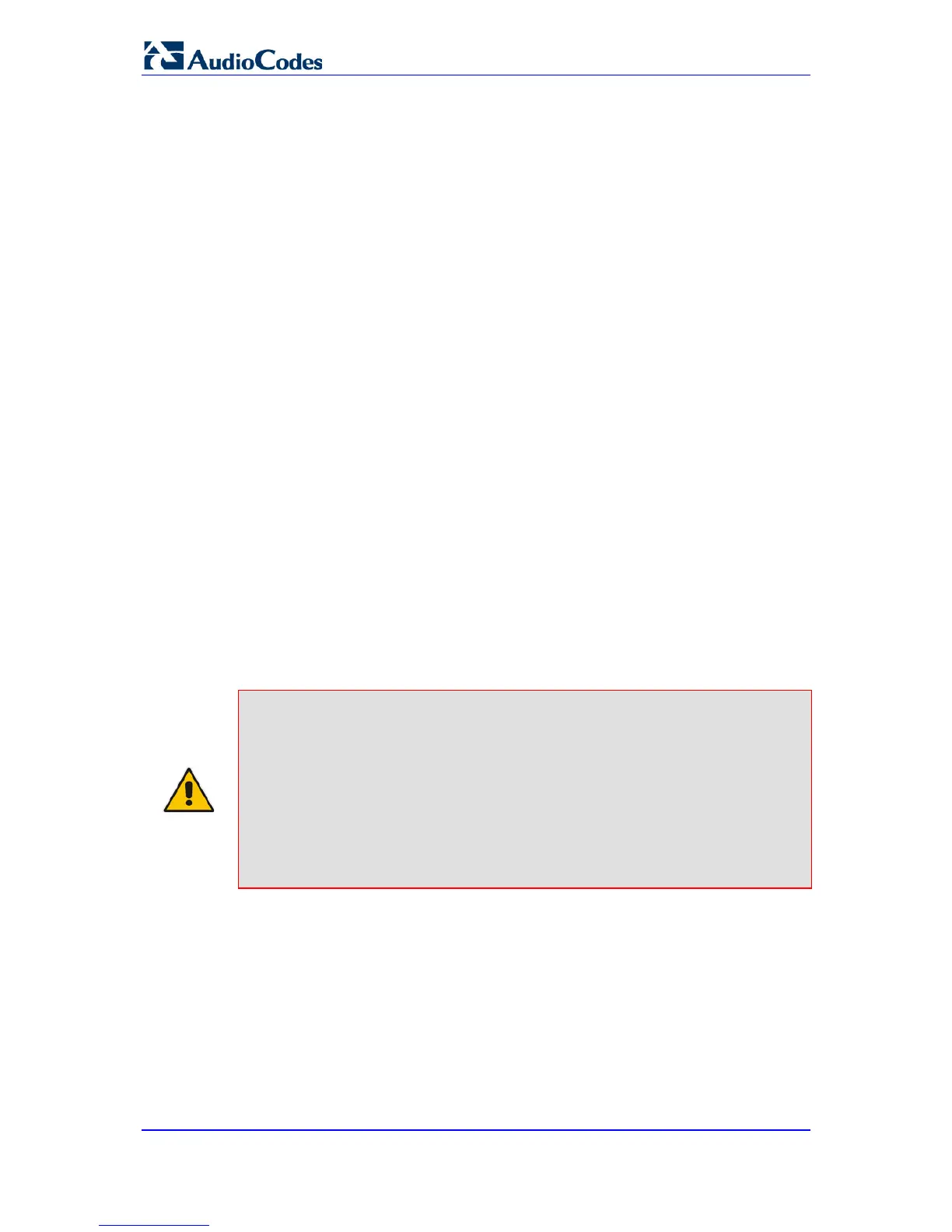31.2 Configuring Admission Control
The Admission Control page allows you to define up to 100 rules for limiting the number of
concurrent calls (SIP dialogs). These call limits can be applied per SRD, IP Group, SIP
request type (e.g., INVITEs), SIP dialog direction (e.g., inbound), and/or per user (identified
by its registered contact). This is especially important for applications where VoIP and Data
traffic contend on the WAN throughput, which may be limited by itself. For example, DSL
WAN access interface is very limited in the uplink. Therefore, by controlling the number of
calls allowed, bandwidth can be reserved for specific Data applications. This feature can be
useful for implementing Service Level Agreements (SLA) policies.
The SIP dialog limits can be defined per SIP request type and direction. These relate to
requests that initiate SIP dialogs and not the subsequent requests that can be of different
type and direction. The SIP dialog-initiating request types can include SIP INVITEs,
REGISTER, and/or SUBSCRIBE, or it can be configured to include the total number of all
dialogs.
This feature also provides support for SIP-dialog rate control, using the “token bucket”
mechanism. The token bucket is a control mechanism that dictates the rate of SIP-dialog
setups based on the presence of tokens in the bucket – a logical container that holds
aggregate SIP dialogs to be accepted or transmitted. Tokens in the bucket are removed
("cashed in") for the ability to setup a dialog. Therefore, a flow can setup dialogs up to its
peak burst rate if there are adequate tokens in the bucket and if the burst threshold is
configured appropriately:
If the bucket contains the maximum number of tokens, tokens to be added at that
moment are dropped.
Requests that reach the user-defined call limit (maximum concurrent calls and/or call rate)
are sent to an alternative route, if configured in the IP-to-IP Routing table for the SRD or IP
Group. If no alternative routing rule is located, the device rejects the SIP request with a SIP
486 "Busy Here" response.
Notes:
• The enforcement of a configured limitation for the incoming leg is
performed immediately after the Classification process. If the call/request
is rejected at this stage, no routing is performed. The enforcement for the
outgoing leg is performed within each alternative route iteration. This is
accessed from two places: one during initial classification/routing, and
another during alternative routing process.
• The Admission Control table can also be configured using the table ini
file parameter, SBCAdmissionControl or CLI command, configure voip >
sbc sbc-admission-control.

